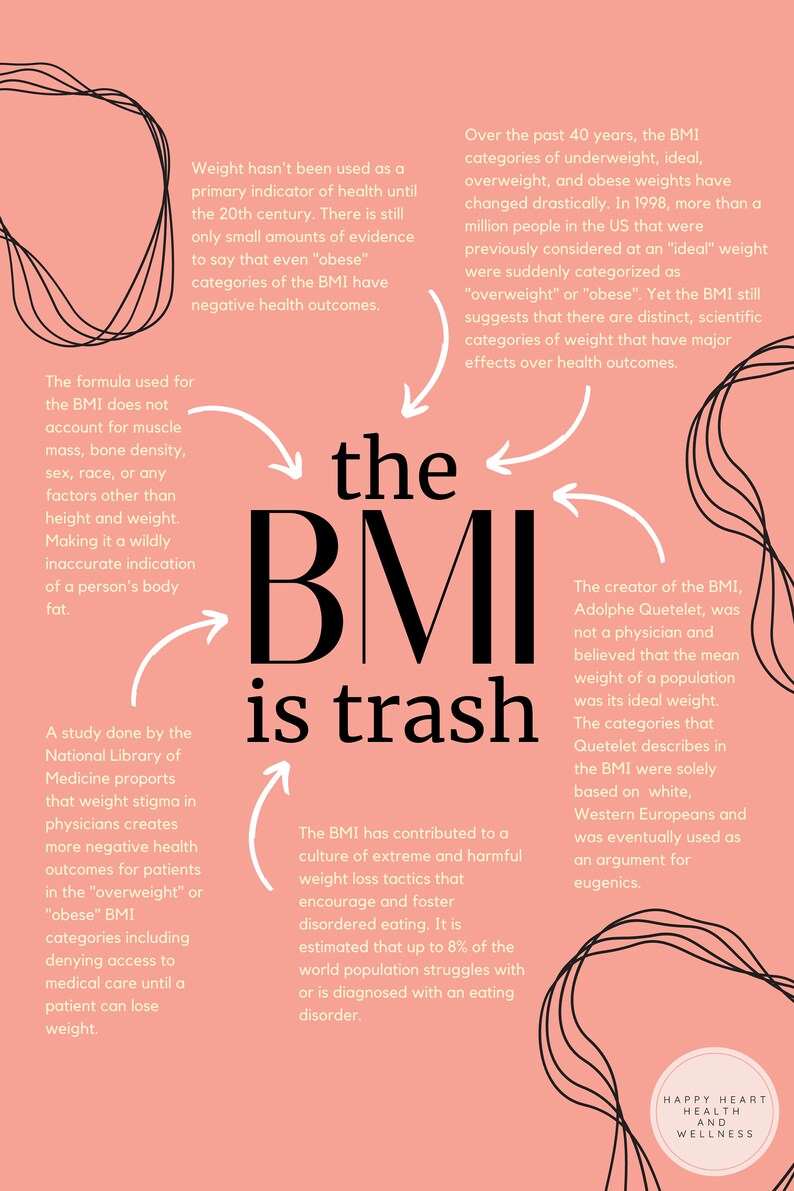The Body Mass Index was invented about 200 years ago…
…by a Belgian academic who studied astronomy, mathematics, statistics, and sociology. His name was Adolphe Quetelet and he was known for his sociological work aimed at identifying the characteristics of “l’homme moyen” or “the average man” – which to Quetelet, represented the social ideal. He believed the mean of the population was the ideal so he invented the Quetelet index (Later known as BMI) to measure their average weight. The measurements were derived from French and Scottish participants only. The Quetelet index was a way to measure populations, not individuals and it was designed for statistics, not as a measurement of health.
Weight wasn’t a primary indicator of health until the early 20th century when U.S. life insurance companies used height and weight to determine what to charge potential policy holders. Insurance companies did not have standards of measurements, so each insurance company had their own way of determining a potential policy holders’ “health”. The people reporting the measurements-which ranged from frame size to age of client- were sales agents, not medical doctors. Some places required self reporting, which led to a host of inaccuracies.
In the 1970s, there was a search for an effective measure of weight. Ancel Keys, and his researchers conducted a study of 7500 men from 5 countries to prove which of the existing methods of measuring body fat would be easiest and most cost effective for a regular doctor’s visit. They found that, “the body mass index […] proves to be, if not fully satisfactory, at least as good as any other relative weight index as an indicator of relative obesity. Still, if density is truly and closely (inversely) proportional to body fatness, not more than half of the total variance of body fatness is accounted for by the regression of fatness on the body mass index.”
All that to say that the BMI was the strongest of three weak and imperfect measures. Water displacement and skin calipers were the other two methods tested. Even in recent testing, BMI can accurately determine obesity 50% of the time. That percent has held true since Keys and his colleagues did their tests. It is less accurate for women, and people of colour. Keys renamed the Quetelet Index the Body Mass Index, and it was thrust into every day healthcare.
In 1985, the National Institutes of Health changed their definitions of “overweight” and “obese,” substantially lowering the threshold to be medically considered fat based upon an individual ranking on the BMI scale. BMI underestimates health concerns in Asian populations which leads to underdiagnosis and overestimates it in Black populations. It also glosses over the differences in female and male body composition because all the research was performed on people assigned male at birth. So, women may be at greater risk if their diagnosis hinges on the measurement.
I’m not including how to measure your BMI because it is an outdated way to determine health. It makes no allowance for the relative proportions of bone, muscle and fat in the body. Bone is denser than muscle and twice as dense as fat, so a person with strong bones and good muscle tone and low fat will still have a high BMI. Many athletes and health-conscious people including celebrities or influencers find themselves classified as overweight or even obese.

